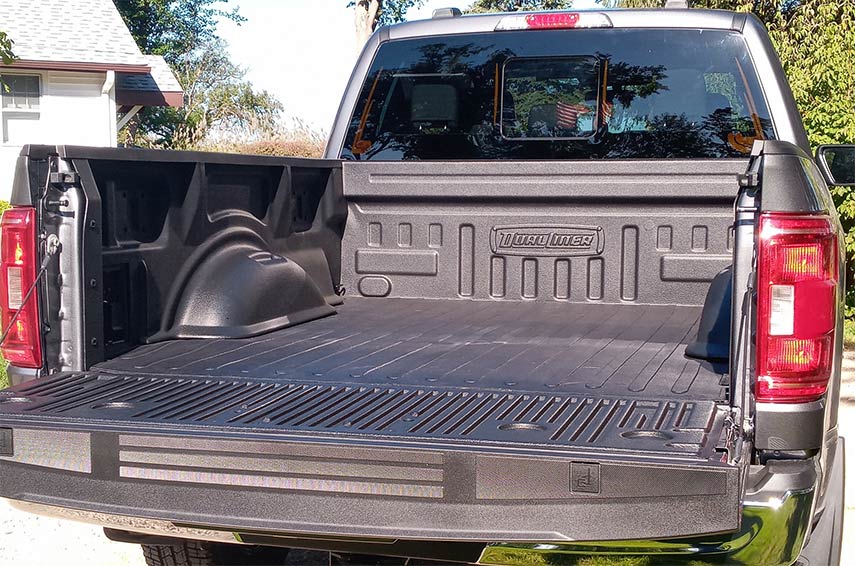Truck bed fuel tanks, sometimes also called transfer tanks, are designed to hold fuel and fit in your truck bed. These tanks are usually constructed of aluminum or steel and are often used by construction companies to transport fuel to the job site and for farm workers to get fuel for their equipment and machinery in the field.
This article is not about auxiliary fuel tanks. Those are a more permanent solution and are used as a secondary source of fuel for the vehicle it is installed in.
When looking for a truck bed fuel tank, the main consideration is usually size. The storage capacity of a truck bed fuel tank generally starts at about 20 gallons and can go up to 100 gallons or more.
As you might expect, an aluminum or steel tank filled with liquid can be pretty heavy, so it’s important to consider how much your truck bed can carry if you’re hauling other cargo simultaneously.
What is a Truck Bed Fuel Tank?
A truck bed fuel tank is a steel or aluminum container designed to hold gas or diesel and fit in your truck bed. If you’re shopping for a truck bed fuel tank, it’s important to make sure that the tank you’re considering is specifically designed for the fuel you want to haul.
For example, some tanks might be designed to hold diesel, but not gas. Some truck bed transfer tanks can hold water or other non-flammable liquids but are not designed to hold fuel. If the truck bed transfer tank doesn’t explicitly say it can be used for fuel, it’s safe to assume it’s NOT meant for fuel.
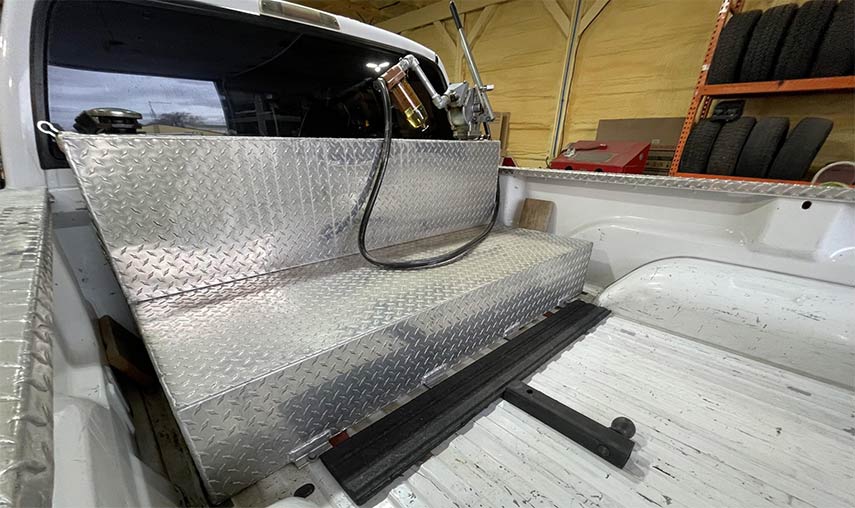
Source: Bring a Trailer
Truck Bed Fuel Tank Capacity and Size
When shopping for a truck bed fuel tank, the first thing to look at is the size. Consider how much fuel you need to haul, the size of your truck bed, and the payload rating if you’ll be hauling other items at the same time. The tank will be heavier with more capacity for fuel. It will also be heavier if it’s made out of steel rather than aluminum.
Steel, Aluminum or Plastic Truck Bed Fuel Tanks
Along with size, the other consideration when shopping for a truck bed fuel tank is what it’s made of. Most tanks are constructed with aluminum or steel. Steel is less expensive than aluminum, but it’s also heavier and has more risk of corrosion.
Aluminum tanks are lighter and won’t corrode, but you will generally pay quite a bit more for an aluminum tank over a steel one.
You might also find transfer tanks constructed from polyethylene plastic, which also doesn’t corrode and is lighter than steel.
Do You Need a Truck Bed Fuel Tank?
Truck bed fuel tanks are typically used by farm and construction workers. The tanks carry fuel to construction sites or remote farmland to fuel equipment there. However, it can serve other purposes as well.
For example, off-roaders and race track drivers might find truck bed fuel tanks useful for bringing extra fuel. If you’re towing ATVs or dirt bikes to a remote location for a little adventure, you might also find it handy to have a fuel tank with you to keep the fun going.
Transferring Fuel From a Truck Bed Fuel Tank
So you’ve bought a truck bed fuel tank that fits your needs, and now you need something to transfer the fuel out of the tank to your vehicle. To accomplish this, you’ll need a transfer tank pump.
These work much like the pumps you see at gas stations. They are installed on the mouth of the fuel tank and pump fuel through a hose to a nozzle that you can insert into your vehicle’s fuel tank.
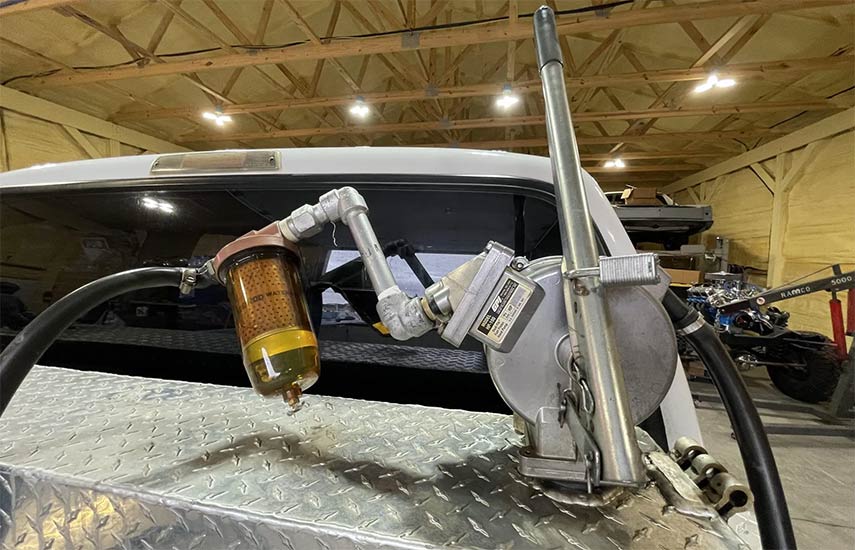
Source: Bring a Trailer
Securing a Fuel Transfer Tank to Your Truck Bed
Most transfer tank users choose a temporary installation method of the tank to their truck bed. This is the easiest method to secure your tank versus a permanent installation, which can take about an hour. The only tool you’ll need is a ratchet strap set. Let’s take a look at the steps.
- Decide where the tank will fit best in your truck bed. Lift the tank into the bed and move it to that position. It’s generally best to have the lid face the side of the truck bed. This makes it easier to access from the ground.
- Install and tighten the ratchet straps to secure the tank. Use the built-in grooves on the tank and your truck’s tie-down points.
However, if you want to install your transfer tank into your truck bed permanently, most tanks come with the hardware and instructions.
Here are the basic steps to installing a truck bed transfer tank:
- Position the tank in the location of the truck bed where you want it installed. Typically right behind the truck cab.
- With a nail punch and a hammer, mark a spot in each hole of the tabs attached to the fuel tank’s base.
- Move the transfer tank out of the way and drill holes through the truck bed making sure not to hit anything important like electrical wires.
- Put the transfer tank back in its position, push the bolts through the holes you drilled and attach the washers, bushings and nuts to the bolts securing them in place.
Top Truck Bed Fuel Tank Brands
When shopping for truck bed fuel tanks, you’ll likely notice some familiar brand names in the truck accessories segment like Dee Zee. Some brands exclusively make fuel tanks for truck beds.
Better Built Truck Bed Fuel Tanks
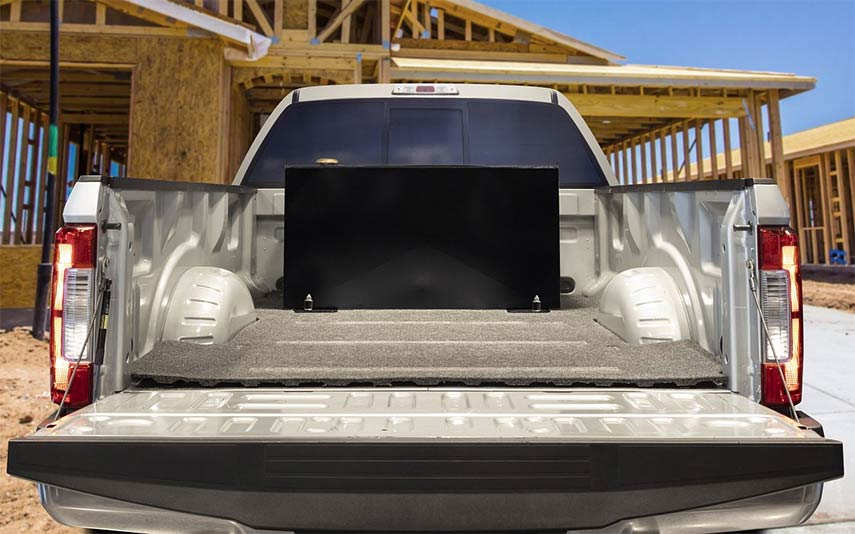
Better Built makes several types of transfer tanks with various sizes and materials, including a tank that holds up to 200 gallons.
You can choose from aluminum or steel tanks and different shapes, including the handy L-shape tank. Better Built tanks are intended for the transport of non-flammable liquid, including diesel fuel.
Dee Zee Truck Bed Fuel Tanks
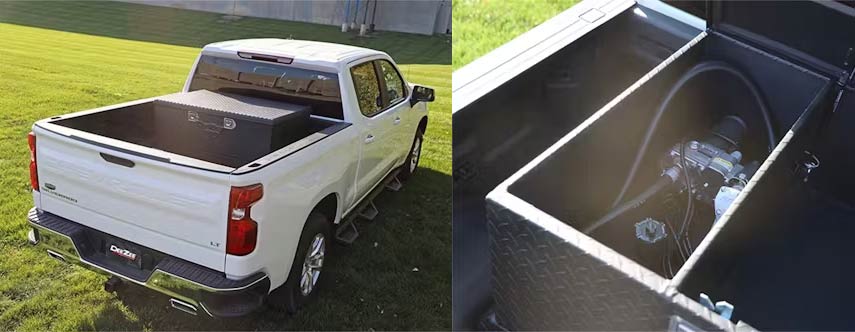
Dee Zee Specialty Series Combination Tool Box Transfer Tank
Dee Zee makes various models of liquid transfer tanks and some are not meant for anything flammable.
One of the most popular models is a combination toolbox and transfer tank. The Specialty Series consists of a 75-gallon aluminum tank for diesel fuel, plus a toolbox. Dee Zee tanks come in a range of capacities, including over 100 gallons.
Transfer Flow Truck Bed Fuel Tanks
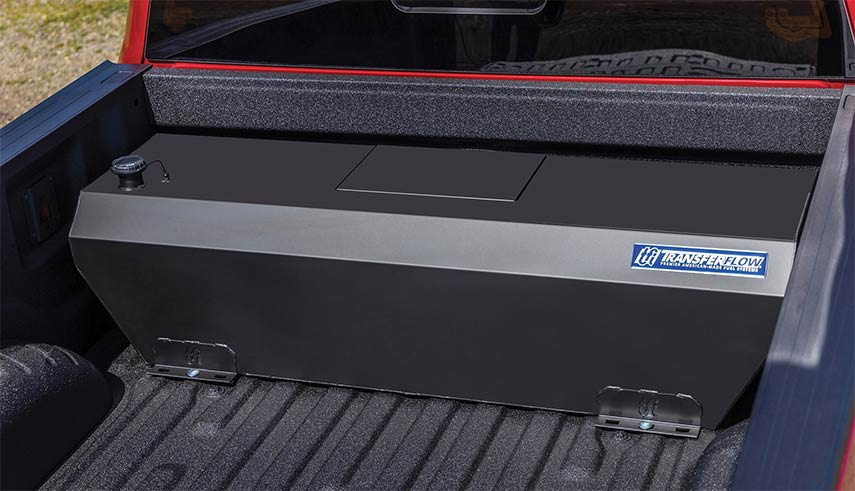
Transfer Flow is an American-made line of truck bed fuel tanks with a wide variety of options for size and shape.
These tanks range in capacity from 40 to 109 gallons and are approved for various fuel types, including gas, diesel, kerosene, and ethanol. Transfer Flow tanks are constructed from aluminized steel for durability and strength.
Aluminum Tank Industries (ATI) Truck Bed Fuel Tanks
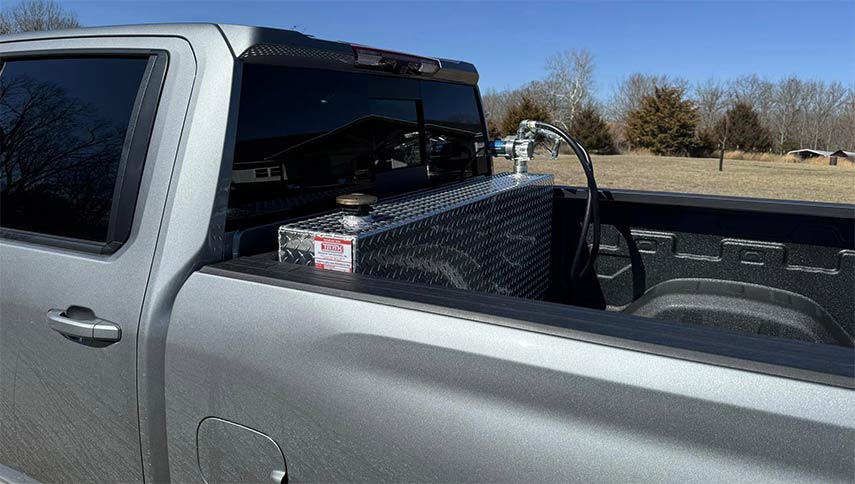
ATI is based in Florida and makes a line of high-quality truck bed fuel tanks. As the brand’s name suggests, the tanks are constructed from lightweight, corrosion-resistant aluminum. ATI tanks come in a range of styles, including L-shaped and rectangular.
These tanks come in various capacities and offer compatibility with several fuel types, including gas, diesel, and aviation fuel.
Protect Your Truck Bed with DualLiner
Before you install anything in your truck bed, you should always protect it with a truck bed liner from DualLiner. The ZeroSkid® bed mat component in the DualLiner system is extremely durable, long-lasting, and resistant to many types of liquid chemicals, including gas, oil, and kerosene.
If you end up spilling liquid chemicals on your DualLiner bed mat, make sure to rinse it with water and rinse beneath the mat as well.
The DualLiner system is extremely efficient in keeping out moisture and protecting your truck bed from scratches, scuffs, and other damage.

